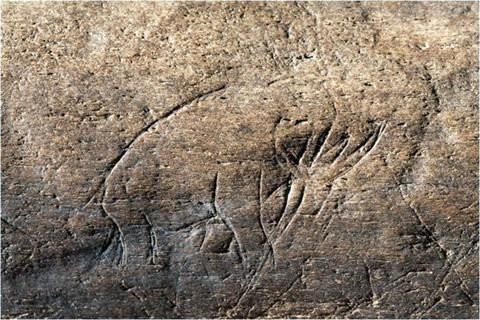
While prehistoric art depicting animals with trunks has been found in Europe, this may be the first in the Western Hemisphere, researchers have reported in the Journal of Archaeological Science.
"It's pretty exciting, we haven't found anything like this in North America," said report co-author Dennis J. Stanford, curator of North American Archaeology at the Smithsonian's National Museum of Natural History.
They hunted these animals, Stanford explained, and "you see people drawing all kinds of pictures that are of relevance and importance to them."
"Much of the significance of such finds is in the tangible, emotional connection they allow us to feel with people in the deep past," said Emory University anthropologist Dietrich Stout.
Cave paintings showing animals have been found in Texas, but those were estimated to date from a mere 4,000 years ago.
The bone fragment contains an image about 76 mm long from head to tail and about 25 mm from head to foot.
"There was considerable skepticism expressed about the authenticity of the incising on the bone until it was examined exhaustively by archaeologists, paleontologists, forensic anthropologists, materials science engineers and artists," said lead author Barbara Purdy of the University of Florida.
The bone was found by a fossil hunter near the "Old Vero Site," where human bones were found alongside those of Ice Age animals in a 1913-1916 excavation.
It was heavily mineralized, which prevented standard dating, Stanford said. But mammoths and mastodons had died out in the Americas by 13,000 years ago, so it has to be older than that.
The researchers wanted to be sure it was not a modern effort to mimic prehistoric art. When studied with microscopes alongside other materials found at the site, it showed no differences in coloration between the carved grooves and the surrounding material.
That, they said, indicated that both surfaces aged together. The researchers also said, there were no signs of the material being carved recently or that the grooves were made with metal tools.
Source: The Associated Press



Reader Comments
to our Newsletter